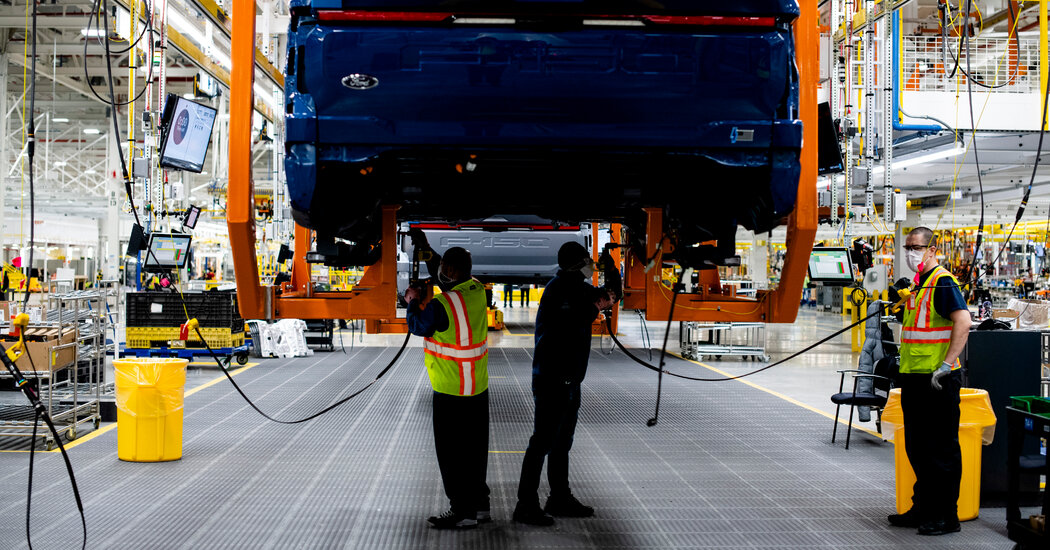
In making gas-powered vehicles, Ford must focus on reducing costs and generating the profits it needs to fund its E.V. plans. Over the next four years, Ford aims to trim costs for its internal-combustion models by $3 billion, with some cuts coming through job reductions, Mr. Farley said.
The electric business, in contrast, will have to spend heavily to develop software and technologies and to ramp up production quickly to achieve economies of scale. Ford aims to produce two million electric vehicles a year by 2026.
“For Ford to win against the new players and the other manufacturers, we have to focus more than we do today,” Mr. Farley said. “You can’t have people work on both at the same time.”
The E.V. group will be known as Ford Model e. Mr. Farley will serve as its president. Doug Field, a former Apple and Tesla executive hired by Ford in September, will lead its vehicle, software and digital systems development.
The internal-combustion business, known as Ford Blue, will be led by Kumar Galhotra, who was president of Ford’s North American operations.
Ford plans to begin breaking out the profits and losses of the two groups in 2023, and expects the electric business to become profitable within four years. Mr. Farley said the group would most likely have 2,000 to 5,000 employees. In addition to developing electric models, it will engineer new types of assembly lines to build them and manage Ford’s sourcing of key components like motors and inverters and raw materials such as lithium and rare earth metals.
Mr. Farley said he envisioned the two groups working closely together. Ford Model e will use body engineering, stamping, and components like seats and steering systems that the internal-combustion group develops. The E.V. unit will produce software and digital components that will be incorporated into traditional gasoline vehicles made by Ford Blue.
Mr. Farley said Ford had decided against spinning off the E.V. business because it would hinder the ability of the two groups to cooperate. “They would come to see each other as competitors, and the cooperation would stop,” he said.




